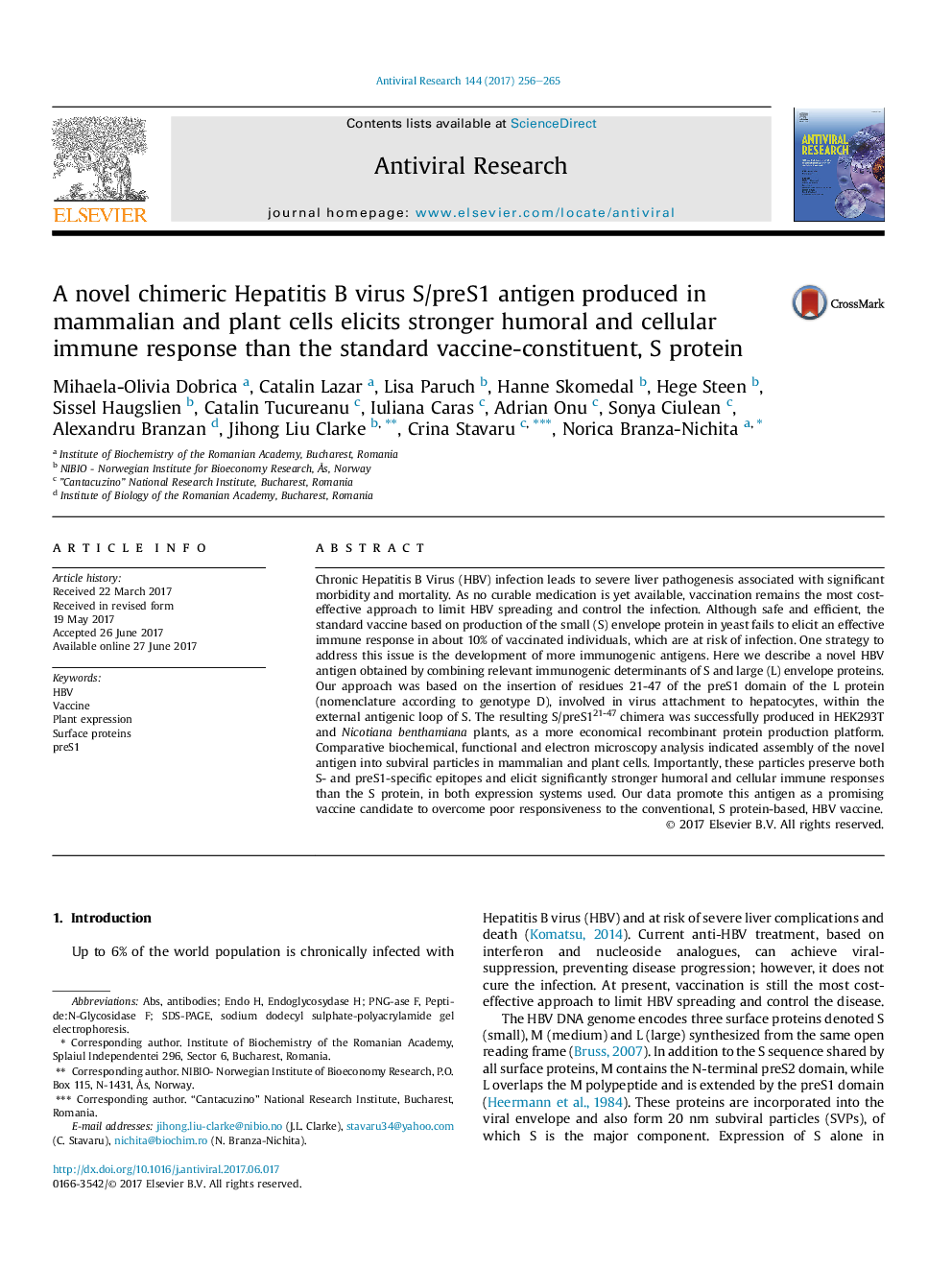| Article ID | Journal | Published Year | Pages | File Type |
|---|---|---|---|---|
| 5551719 | Antiviral Research | 2017 | 10 Pages |
â¢A novel HBV chimeric antigen was obtained by combining relevant immunogenic determinants of S and L envelope proteins.â¢The S/preS121-47 chimera was successfully produced in HEK293T cells and Nicotiana benthamiana plants.â¢The S/preS121-47 chimera retains both, S- and preS1-specific epitopes.â¢The antigen elicits significantly stronger humoral and cellular immune responses than the S protein in vaccinated mice.
Chronic Hepatitis B Virus (HBV) infection leads to severe liver pathogenesis associated with significant morbidity and mortality. As no curable medication is yet available, vaccination remains the most cost-effective approach to limit HBV spreading and control the infection. Although safe and efficient, the standard vaccine based on production of the small (S) envelope protein in yeast fails to elicit an effective immune response in about 10% of vaccinated individuals, which are at risk of infection. One strategy to address this issue is the development of more immunogenic antigens. Here we describe a novel HBV antigen obtained by combining relevant immunogenic determinants of S and large (L) envelope proteins. Our approach was based on the insertion of residues 21-47 of the preS1 domain of the L protein (nomenclature according to genotype D), involved in virus attachment to hepatocytes, within the external antigenic loop of S. The resulting S/preS121-47 chimera was successfully produced in HEK293T and Nicotiana benthamiana plants, as a more economical recombinant protein production platform. Comparative biochemical, functional and electron microscopy analysis indicated assembly of the novel antigen into subviral particles in mammalian and plant cells. Importantly, these particles preserve both S- and preS1-specific epitopes and elicit significantly stronger humoral and cellular immune responses than the S protein, in both expression systems used. Our data promote this antigen as a promising vaccine candidate to overcome poor responsiveness to the conventional, S protein-based, HBV vaccine.
